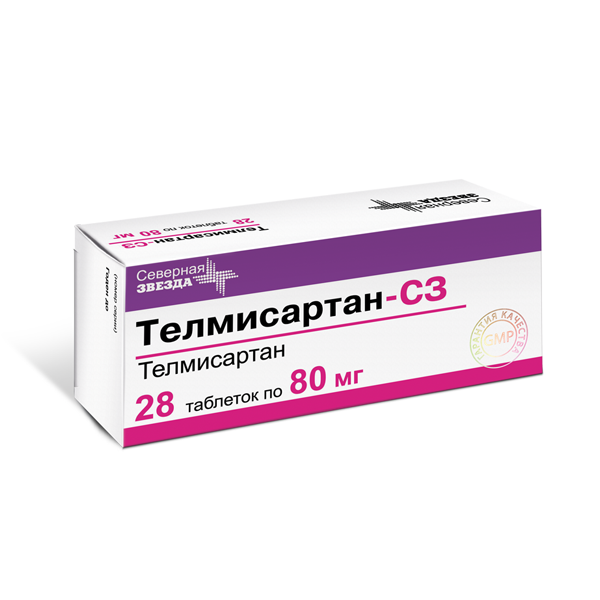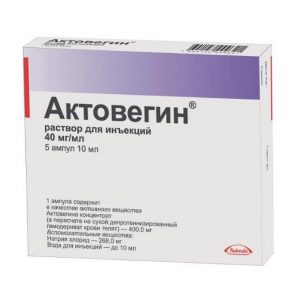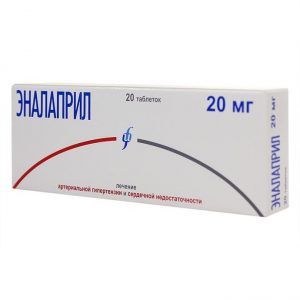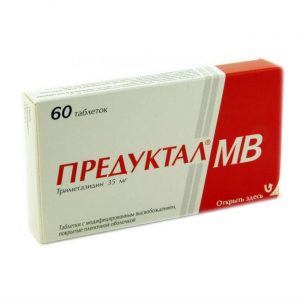Description
Description
Tablets are white or almost white in color, round, flat cylindrical, with bevel and notch.
Release form
Arterial hypertension.
Pharmacological action
Antihypertensive agent, angiotensin II receptor antagonist (type AT1). It has a very high affinity for this receptor subtype. Selectively and continuously binding to receptors, telmisartan displaces angiotensin II from its association with AT1 receptors. No affinity for other subtypes of AT receptors. The functional significance of other subtypes of receptors and the effect of increased (as a result of the appointment of telmisartan) levels of angiotensin II on them is not known. Telmisartan reduces plasma aldosterone levels, does not inhibit plasma renin, does not block ion channels, does not inhibit ACE (kinase II), which also destroys bradykinin. Therefore, the manifestation of side effects associated with bradykinin is not observed.
Contraindications
Obstruction of the biliary tract, severe impaired liver and kidney function, pregnancy, lactation (breastfeeding), hypersensitivity to telmisartan.
Recommendations for use
For adults, the daily dose is 20-40 mg (1 time / day). In some patients, a hypotensive effect can be achieved at a dose of 20 mg / day. If necessary, the dose can be increased to 80 mg / day. Patients with impaired renal function, as well as elderly patients, do not need dose adjustment. For patients with impaired liver function, the daily dose is 40 mg.
Special instructions
Use caution telmisartan for violations of the liver, gastric ulcer and duodenal ulcer in the acute stage, other gastrointestinal diseases, aortic stenosis and mitral valve, obstructive hypertrophic cardiomyopathy, coronary heart disease, heart failure. In patients with bilateral renal artery stenosis or renal artery stenosis of the only functioning kidney, telmisartan increases the risk of severe arterial hypotension and renal failure. Therefore, telmisartan should be used with caution in this category of patients. During the use of telmisartan in patients with impaired renal function, it is necessary to control the content of potassium and creatinine in blood plasma. There are currently no data on the use of telmisartan in patients with a recent kidney transplant. In patients with reduced BCC and / or hyponatremia, symptomatic hypotension may occur, especially after taking the first dose of telmisartan. Therefore, before conducting therapy, correction of such conditions is necessary. Telmisartan is not recommended for patients with primary aldosteronism, as such patients are insensitive to drugs that have an effect on the renin-angiotensin system. The use of telmisartan is possible in combination with thiazide diuretics, because this combination provides an additional reduction in blood pressure. When considering the possibility of increasing the dose of telmisartan, it should be remembered that the maximum hypotensive effect is usually achieved 4-8 weeks after the start of treatment. Use in pediatrics There are no data on the safety and effectiveness of telmisartan in children and adolescents. Influence on the ability to drive vehicles and control mechanisms The question of the possibility of engaging in potentially hazardous activities, requiring increased attention and rapid psychomotor reactions, it should be decided only after evaluating the individual response to telmisartan.
Composition
1 tab. Telmisartan 80 mg Excipients: sodium hydroxide – 6.8 mg, povidone (K-30) – 24 mg, meglumine – 24 mg, mannitol – 330.4 mg, magnesium stearate – 4.8 mg, talc – 10 mg. 10 pieces. – blister packs (3) – packs of cardboard.
Side effects
From the side of the central nervous system: headache, dizziness, fatigue, insomnia, anxiety, depression, cramps. From the digestive system: abdominal pain, dyspepsia, nausea, diarrhea, increased activity of hepatic transaminases. From the respiratory system: cough, pharyngitis, upper respiratory tract infection. From the hemopoietic system: a decrease in hemoglobin levels. Allergic reactions: rash in an isolated case – angioedema. From the urinary system: peripheral edema, urinary tract infections, increased uric acid levels, hypercreatininemia. From the cardiovascular system: a marked decrease in blood pressure, palpitations, chest pain. From the musculoskeletal system: lower back pain, myalgia, arthralgia. From the laboratory indicators: hyperkalemia, anemia, hyperuricemia. Other: flu-like syndrome.
Drug Interactions
With simultaneous use with antihypertensive drugs, an increase in antihypertensive effect is possible. With simultaneous use with potassium-sparing diuretics, heparin, biologically active additives, salt substitutes containing potassium, the development of hyperkalemia is possible. With simultaneous use with lithium preparations, an increase in the concentration of lithium in blood plasma is possible. With simultaneous use, an increase in the concentration of digoxin in blood plasma is possible.
Active ingredient
Telmisartan
Terms of delivery p114 pharmacy package
pharmacy prescription
lekarstvennaja form
tablets




